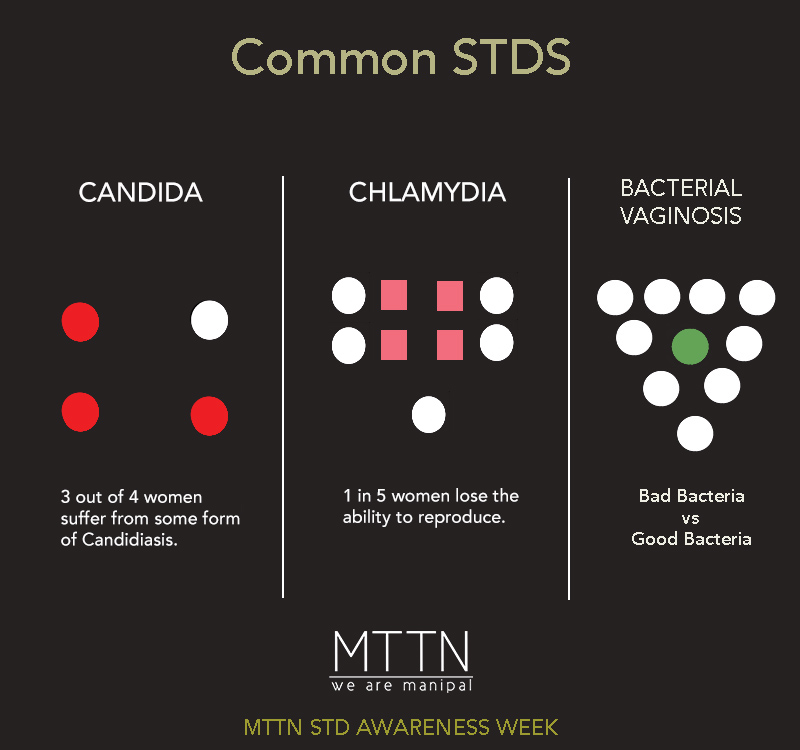
Candidiasis
According to a survey by the Mayo Clinic, a startling 3 out of 4 women experience some grade of vaginal candidiasis. Although vaginal candidiasis is not generally considered a sexually transmitted infection, it can still be transmitted through sexual contact.
The Candida genus of yeast is normally found in the vagina and is the main culprit of this disease. Its growth, however is kept in check by Lactobacillus – the good yeast in the vagina. Any imbalance in the body can cause an overgrowth of Candida and hence lead to vaginal thrush.
The imbalance could be caused by:
1. Excessive antibiotic use
2. Pregnancy
3. Diabetes mellitus
4. Weak/weakened immune system
5. Lack of sleep
6. Hormonal fluctuations
Vaginal candidiasis presents with generalized symptoms such as itching, burning, soreness, rash, pain during sexual intercourse and a thick, curdy white discharge.
It is easily prevented by using mild soap and rinsing well while cleaning. Always wipe from front to back to prevent spreading yeast or bacteria from the anus to the vagina.
Chlamydia
Chlamydia is a common STD that affects both men and women. In women, chlamydia can affect the reproductive system and thus impair their ability to reproduce. Chlamydia also raises the probability of having an ectopic pregnancy. As such, a prompt and effective treatment for chlamydia is necessary. Fortunately, chlamydia can be easily cured.
Chlamydia is caused by Chlamydia trachomatis bacteria. It can be transmitted through vaginal, anal and oral sex.
Most of the patients do not present with symptoms. However, common symptoms such as pain in the lower abdomen, testes, pelvis or vagina during sexual intercourse or urination, discharge from vagina or penis and uncommonly, spotting may be present.
The incidence of chlamydia can be reduced by reducing vaginal douching and limiting the number of sexual partners. Male chlamydia can be prevented by using condoms.
Bacterial Vaginosis
Bacterial vaginosis is a mild infection of the vagina that is caused by an imbalance of the “good” bacteria and “bad” bacteria with the tilt in favor of the latter. This is very common, with 10 million cases documented annually, and usually resolves on its own. However, it may lead to long term sequelae, uncommonly.
The infection is asymptomatic in most females but may present with a gray yellow, smelly discharge and a fishy odor that worsens after intercourse. Doctors are not entirely sure why this imbalance occurs but probable factors are having multiple partners and vaginal douching.
Thus, avoiding douching is a recommended measure.
It is imperative for a patient to recognize any of these symptoms and immediately approach the doctor. If left untreated, many STDs cause PID (pelvic inflammatory disease) that can have sequelae such has fallopian tube scarring and stricture formation.
These make it difficult, if not entirely impossible, for a woman to conceive. If the woman does conceive, the development of an ectopic pregnancy can present as an additional complication. Also it is worth considering that only by nipping an STD in the bud can we prevent its subsequent spread in society.
– By Anirudh Gupta for MTTN
Delve deeper into our series on STD Awareness.
Leave a Reply
You must be logged in to post a comment.